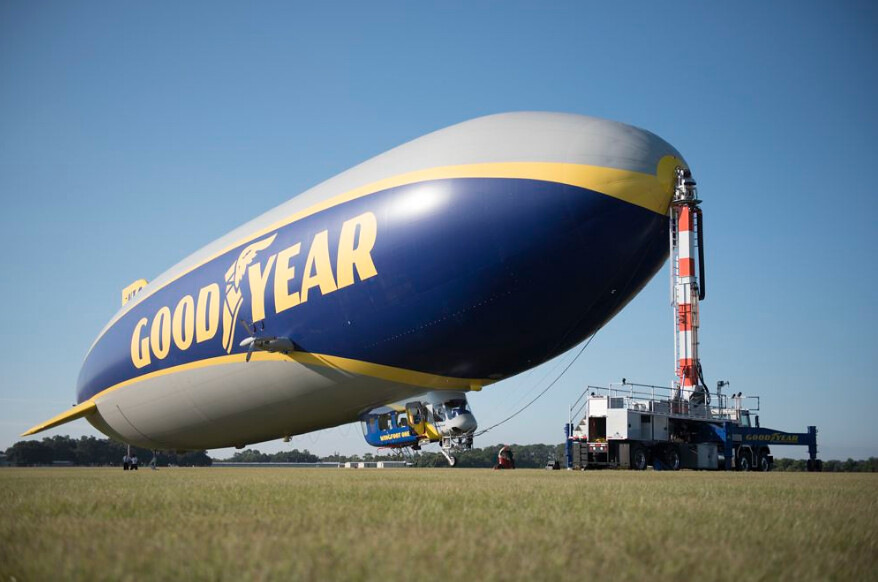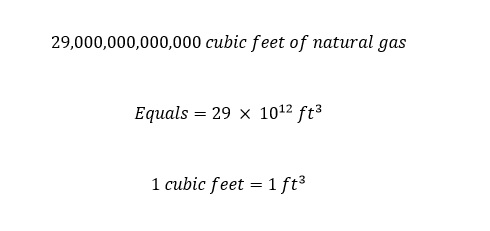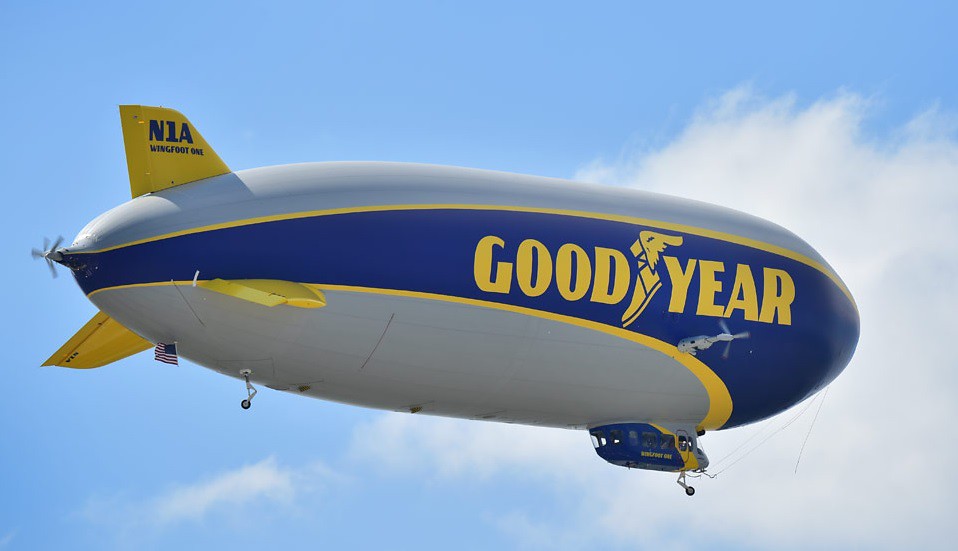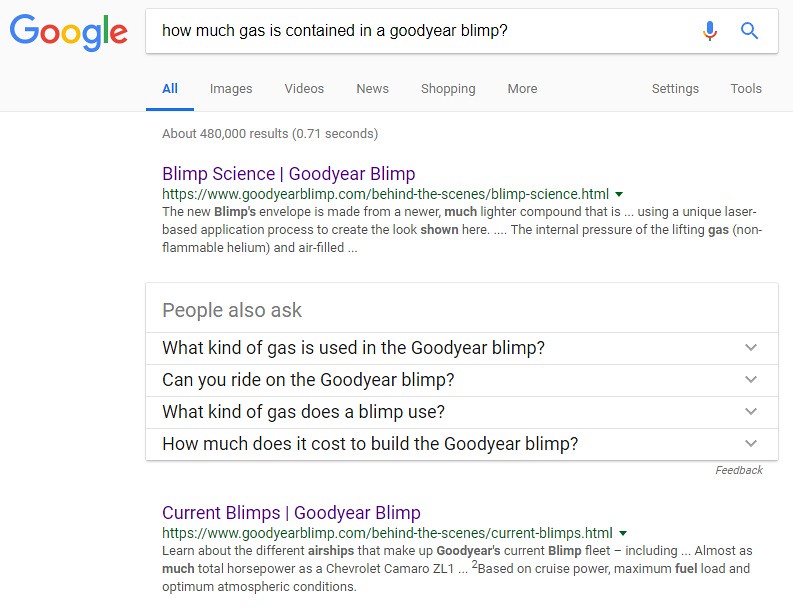Source: Flying magazine
The task is to fill as many GoodYear Blimps (which are shown above) with a total of 29 Trillion Cubic Feet of Natural Gas. Why 29 Trillion? According to an article in the 'Washington Examiner' titled "American natural gas is fueling the world's future" written by Energy Secretary Rick Perry, 29 trillion cubic feet of Natural gas is the amount produced last year as shown below:
Natural gas has been and remains a critical component of the nation's energy portfolio. In 1988, President Ronald Reagan spoke at the last WGC meeting held in the United States and stressed its importance as an affordable, secure and clean-burning fuel. That year, the United States produced just under 18 trillion cubic feet of natural gas and it accounted for less than 10 percent of our power mix. Last year, the United States produced nearly 29 trillion cubic feet of this fuel, and it was the single largest source of our electricity, accounting for 32 percent all U.S. production. We are now on track to reach record-breaking production levels, and natural gas now makes up nearly one-third of the country's electricity generation.
In the paragraphs below, the following dimensional analysis will reveal the total number of GoodYear Blimps needed to consume 29 trillion cubic feet of natural gas. Enjoy.
How Much Gas Occupies a GoodYear Blimp?
As the case is with all math problems or shall I say dimensional analysis problems, the largest problem is figuring out where to start. The current problem is to determine the number of Goodyear blimps which could be filled with a total volume of gas of 20 trillion cubic feet. First, lets express that number into scientific notation as shown below:
The number looks different using scientific notation right? Scientific notation allows scientists to express very large numbers into manageable numbers without having to write all of the zero's after each number. Otherwise, writing large numbers would take up unnecessary space and would not have any different meaning compared to writing in a compact - scientific notation form.
Next, a metric is needed to compare the total amount (volume) of gas to. The metric chosen is the amount of volume that is occupied by a Goodyear blimp. Readers of this blog site will remember the first time that the Goodyear blimp was used as a metric in a blog post. A Goodyear Blimp -- model Wingfoot One is shown in the picture below:
Source: EAA
In order to find out the amount of gas that occupies such a floating structure, we can ask a search engine -- Google -- the following question: How much gas is contained in a Goodyear blimp? The answer is shown below:
If we choose the second link underneath the questions shown above titled "Current Blimps" then we are directed to the Goodyear website -- specifically, the web page for the 'Wingfooot Series'. Scroll to the bottom for the dimensions of the Wingfoot One Goodyear Blimp. We can find the volume of gas which occupies a single blimp in this section of the web page.
According to the Goodyear website for the 'Wingfoot Series' of blimps, the total volume of gas is 297,527 cubic feet of helium in a single blimp -- the Wingfoot One shown in the photograph at the beginning of the blog post. Note: both numbers (total volume of natural gas and volume of gas per blimp) are expressed in units of 'cubic feet'. Therefore, there is no unit conversion needed in the following steps of the dimensional analysis. Which means that both numbers can be directly compared with one another and simplifies the length of the calculation.
With the volume of gas in a single blimp known, the next step (final step) is to divide the total amount of gas (in question) by the volume in a single blimp as shown below:
According to the result of our calculations shown above, the total amount of natural gas produced by the United States could fill a total of 97 million blimps. Wow!
Conclusion...
Solving math problems (dimensional analysis problems) like the example shown above highlight the enormity of the amount of gas produced by the U.S. per year. Additionally, the amount of gas produced only accounted for around 32% of all electricity required for the United States in a given year. The number might come in handy when talking with friends at social gatherings. You might point out that to power the entire United States per year exclusively on natural gas would require around enough gas to fill around 291 million Goodyear blimps. However you choose to use the calculations above, the result gives us a better understanding of the amount of natural gas produced in a single year by the United States.
Related Blog Posts:
Dimensional Analysis Of Statistics And Large Numbers - Index Of Blog Posts
What is dimensional analysis?
How many trash carts can be filled with 80 billion pounds of trash?
How many people would be killed if 1,485 pounds of Fentanyl were distributed onto the streets in the U.S.?
What Is Dimensional Analysis?
Was The Recent Oil Spill in China The Largest In History?
LimeBike Dockless Bikeshare Riders Travel A Distance Of 13,000 Miles In Just Over 3 Weeks?
How Many Cigarettes Can You Roll With 18,000 Pounds Of Marijuana?
How Many Turkey's Are Served On Thanksgiving Day? How Many People Served?
How Much Trash Would Be Required To Fill The Great Wall Of China?
How Many Birds Per Minute Can Be Processed On A Single Line At A Poultry Processing Plant?
Hurricane Harvey Drops Enough Rain On Houston To Fill 560 Dallas Cowboy Stadiums
If Technology Fails, Use Basic Math Skills - Count Manually!!
How Much Water Is Contained In All Oceans Around The Globe?





No comments:
Post a Comment